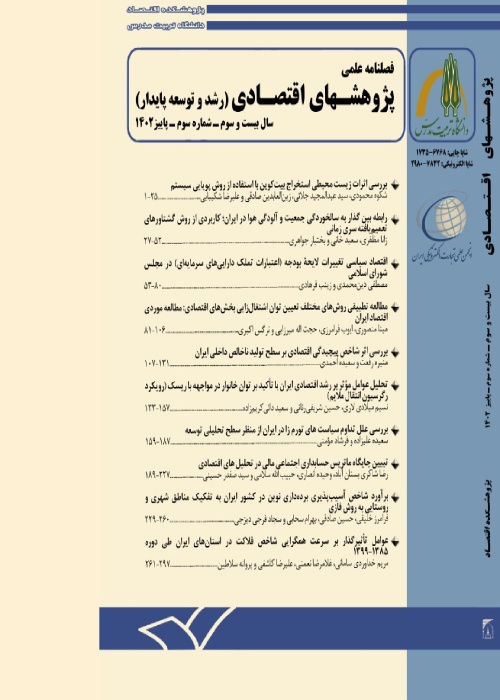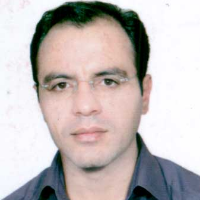Targeting under Conditions of Imperfect Information and Budget Constraint: A Case Study of Rural Households in Iran
In order to target the limited budgets of poverty alleviation programs and increase their efficiency, a wide range of targeting methods including means testing, proxy means testing, categorical targeting, geographical targeting, self-targeting, and community-based targeting has been used in developing countries (Coady, Grosh and Hoddinott, 2004). However, targeting in Iran, in the best case, has been based on the proxy means testing. Kidd and Wylde (2011) have criticized this method due to lack of transparency and poor predictions in the field of identifying the poor. The main purpose of this article is to compare the different economic and social characteristics of Iran’s rural households with the aim of finding the best characteristics in order to target subsidies in Iran. In this context, the following questions are raised: In a situation where accurate information about household income or expenses is not available, how should households be prioritized to receive subsidies based on their characteristics? How much cash subsidy should each household receive in order to reduce the aggregate poverty? To answer these questions, by following, Kanbur (1987), Ravallion and Chao (1989), Elbers, Fujii, Lanjouw, Özler and Yin (2007), Glewwe (1992) and Araar and Luca (2019), I use a new numerical algorithm, which acts as optimal poverty group targeting. This method is conceived to find the optimal group transfers that allow the largest possible reduction in any additive poverty indexes, like the Foster, Greer, Thorbecke (FGT) class of poverty indexes.
This article uses a new numerical algorithm, which acts as optimal poverty group targeting. This method was first presented by Kanbur (1987), which focused on the theoretical rules of optimization. Then, based on the theoretical findings of Kanbur (1987), Ravallion and Chao (1989) have proposed numerical method that maximizes the reduction in the FGT (α=2) index by group transfers, subject to a fixed budget. After that, Glewwe (1992) improved it theoretically, and finally, Araar and Luca (2019) proposed the method of optimal group targeting by modifying Glewwe (1992) method. In fact, the methodology of Glewwe (1992) is a generalization of Kanbor (1987) and Ravallion and Chua (1989) Method, but the mentioned methodologies focused on a subset of poverty indicators (e.g., squared poverty gap index) for which an analytical solution was possible. Contrarily, Araar and Luca (2019) proposed a new method, which is applicable to all additive poverty indices (such as the headcount or poverty gap rates and squared poverty gap indexes).This article uses income-expenditure data of rural households of Iran in 2020, and follows Araar and Luca (2019) methodology. In addition, to check the efficiency of this method, three indicators including the quality of targeting, inclusion and exclusion errors will be used.
In this article, economic and social characteristics of rural households in Iran were compared to targeted poverty alleviation programs. Based on the results, for the head count ratio, the targeting efficiency based on different household characteristics changes between 23.67 and 31.03 %, the population coverage rate changes between 38.93 and 100 %, and the sum of the inclusion and exclusion errors changes between 41.62 and 52.53%. Now, if the targeting is done based on the poverty gap index, the targeting efficiency will be between 42.18 and 48.02 %, the population coverage rate will be between 86.21 and 100 %, and the sum of the exclusion and inclusion errors will be between 46.96 and 52.53%. Finally, if the poverty severity index is used as the basis for targeting, the targeting efficiency will change between 53.99 and 59.51 %, the population coverage rate will change between 99.33 and 100 %, and the sum of the inclusion and exclusion errors will change between 48.92 and 52.53%. It is interesting to note that in targeting based on all three mentioned poverty indicators, the family size, number of members under 7 years old and the education of the household head are always the best characteristics for targeting poverty.
The main purpose of this article is to compare the different economic and social characteristics of rural households with the aim of identifying the best characteristics in order to targeting subsidies in Iran. According to the results of this article, the characteristic that should be taken into account in targeting is the family size, which the efficiency of targeting based on this characteristic is equal to 51.59% of targeting with complete information. The rate of exclusion and inclusion errors are zero and 52.53%, respectively. Finally, in the targeting based on the family size and squared poverty gap index, the population coverage rate is 100, which is very acceptable from the social point of view. Paying attention to the changes in the poverty indices based on the household demographic characteristics is very important, because if the family size increases, the poverty indices grow strongly. As a result, the headcount, poverty gap and squared poverty gap indexes for families with six and more people become 2.5, 3.5 and 2.4 times the same index for households with 1-2 people, respectively.
- حق عضویت دریافتی صرف حمایت از نشریات عضو و نگهداری، تکمیل و توسعه مگیران میشود.
- پرداخت حق اشتراک و دانلود مقالات اجازه بازنشر آن در سایر رسانههای چاپی و دیجیتال را به کاربر نمیدهد.



